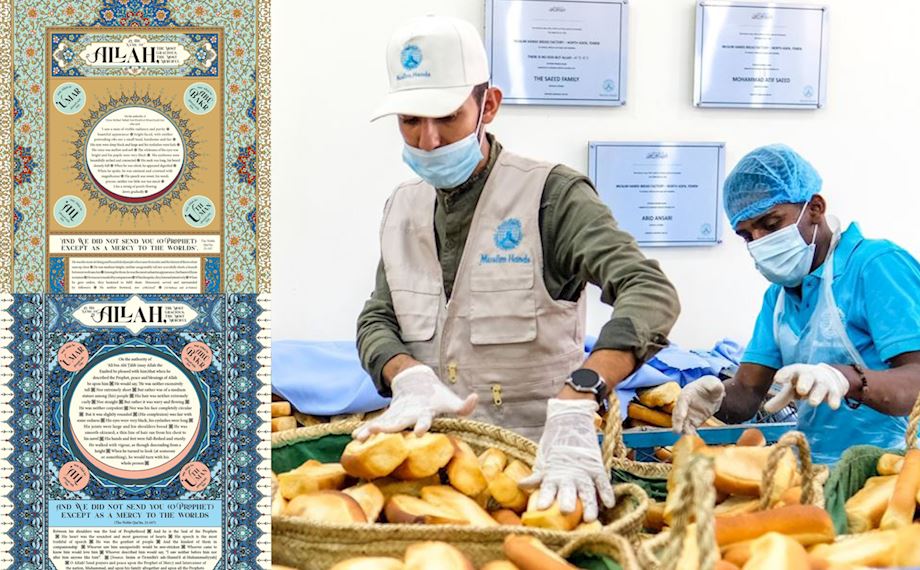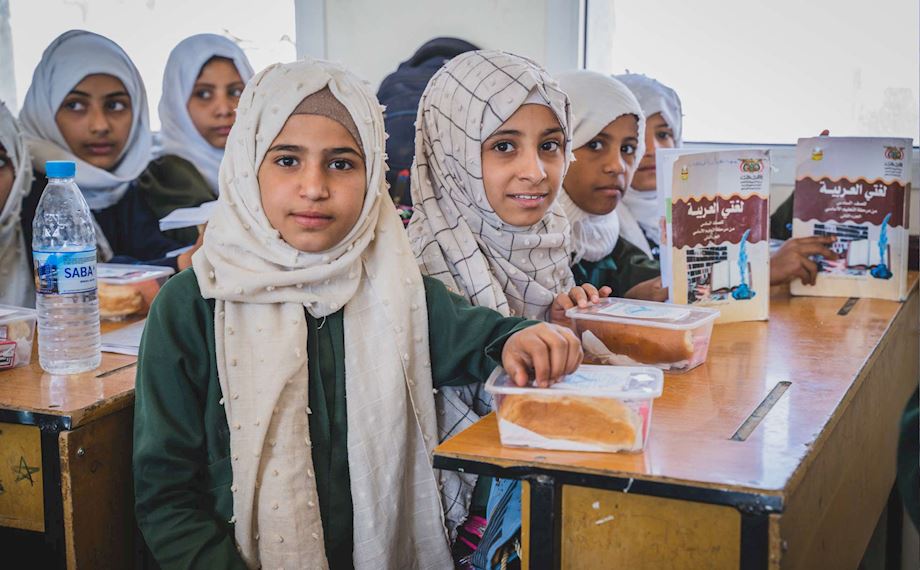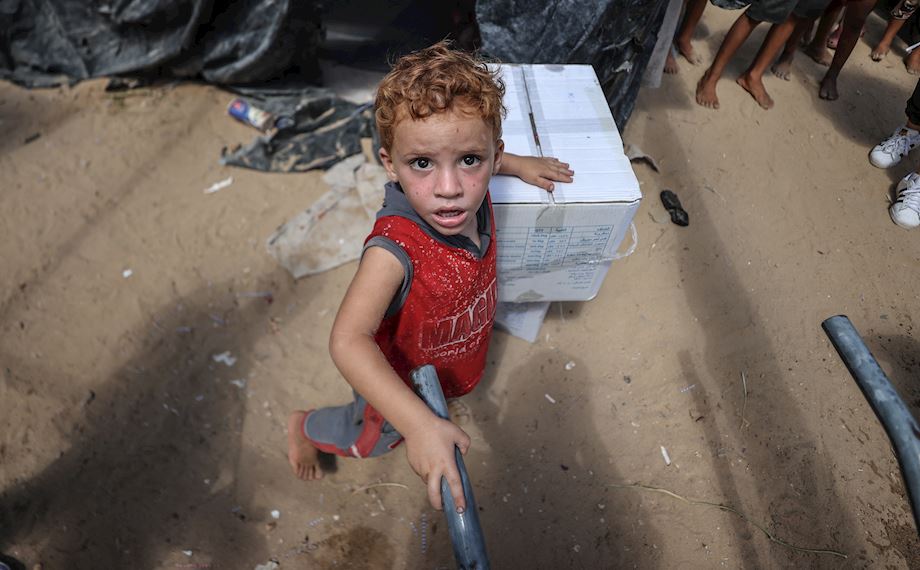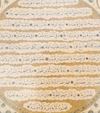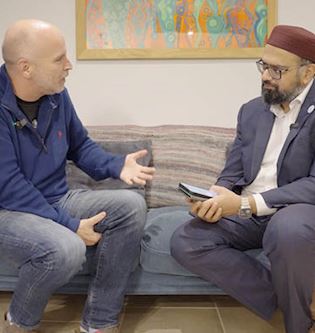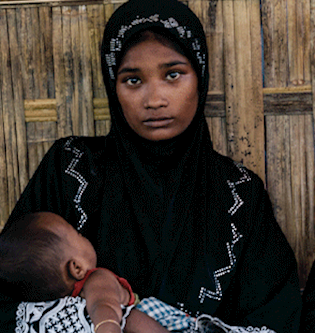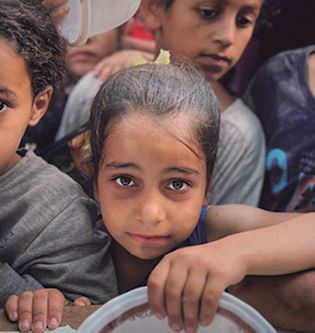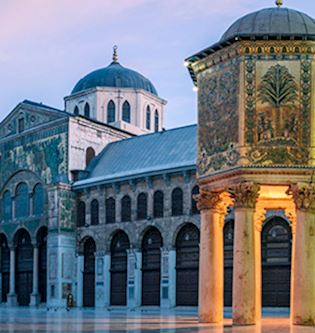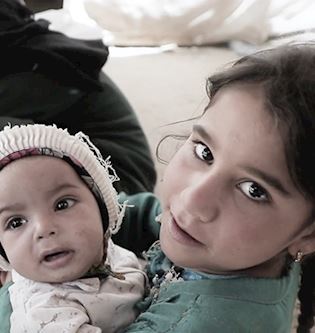The Historic Art of the Hilye

In the name of Allah, the Most Gracious, the Most Merciful. The following is an explanation of the historic art of the Hilye, including the purpose of Hilye art pieces and the meaning behind the elements they contain. You can download our Hilye poster here.
To know him (saw) is to love him
Imam Tirmidhi (rh) narrates an inspiring hadith where a man asks the Prophet (saw), ‘O Messenger of Allah! When will the Hour be established?’
After the Prophet (saw) finished his prayer he asked for the man and said to him, ‘What have you prepared for it?’
The man responded, ‘O Messenger of Allah! I have not prepared much prayer nor fasting for it, except that I love Allah and His Messenger’.
The Messenger of Allah (saw) then said, ‘Man shall be with the one he loved and you will be with the one you have loved’.
The narrator of this extraordinary hadith Anas (ra), who served the Prophet (saw) for ten years then commented that, ‘I have not seen the Muslims more overjoyed since the advent of Islam than with this!’
The most commonly used word for love in Arabic is hubb, which is closely related to the Arabic word habb from the same root. Habb means a seed. Scholars explain that, just like a seed, love requires nurturing and attention in order to flourish and grow. How can we claim that we love the Prophet (saw) and desire to be with him for eternity in the Hereafter while we know very little about him!

Herein lies the inspiration for the Hilye. It is an attempt to nurture and grow our love for the Messenger of Allah (saw) and the One who sent him, our Lord (swt), by learning about his outward physical description and inward character in order to be with him in the Hereafter.
What is the Hilye?
We find in Hadith literature examples of Jews and Christians, prior to the coming of the Prophet (saw), who had detailed portraits of him as the final Messenger of God. This explains the ayah: ‘Those to whom We have given the Scripture recognise him [saw] as they fully recognise their own sons’. [Qur’an, 2:146 & 6:20]
However, it is well known that drawing the Prophet (saw) is strictly prohibited in Islamic tradition. Due to this prohibition, our pious Ottoman predecessors developed a beautiful and ornate art form over 300 years ago known as the Hilye in Turkish, which primarily revolves around the physical description of the Prophet Muhammad (saw). These beautiful art pieces were often created with expensive paper and gold ink. In Turkish, they are called Hilye-i Saadet (the Hilye of Felicity), Hilye-i Sherif (the Noble Hilye) and Hilye-i Nebevi (the Prophetic Hilye).
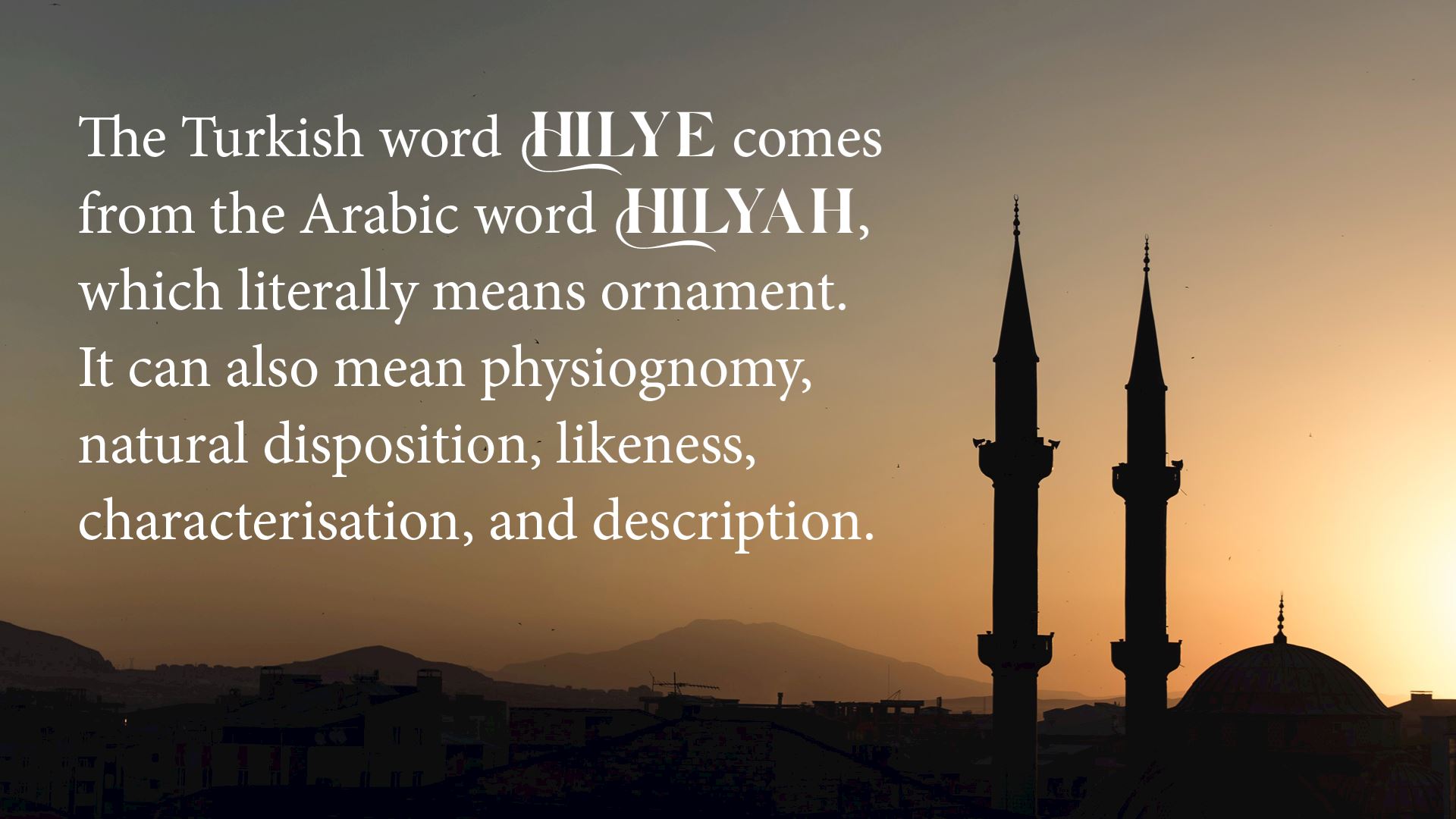
The word Hilyah famously appears in the most comprehensive hadith describing the Prophet (saw), when al-Hasan (ra), the grandson of the Prophet (saw), asks Hind ibn Abu Halah (ra), ‘about the description (Hilyah) of the Messenger of Allah (saw) since he was wont and fully capable to describe them. I desired and wanted him to describe them to me because I wanted something to hold on to’. [Tirmidhi]
The above hadith excerpt reveals the reason to know the Hilyah (description) of the Messenger of Allah (saw) - it is not meant to be an academic or theoretical exercise but rather to cling onto in order to emulate his incredible character. The Prophet (saw) represents the complete human being (al-Insan al-Kamil):
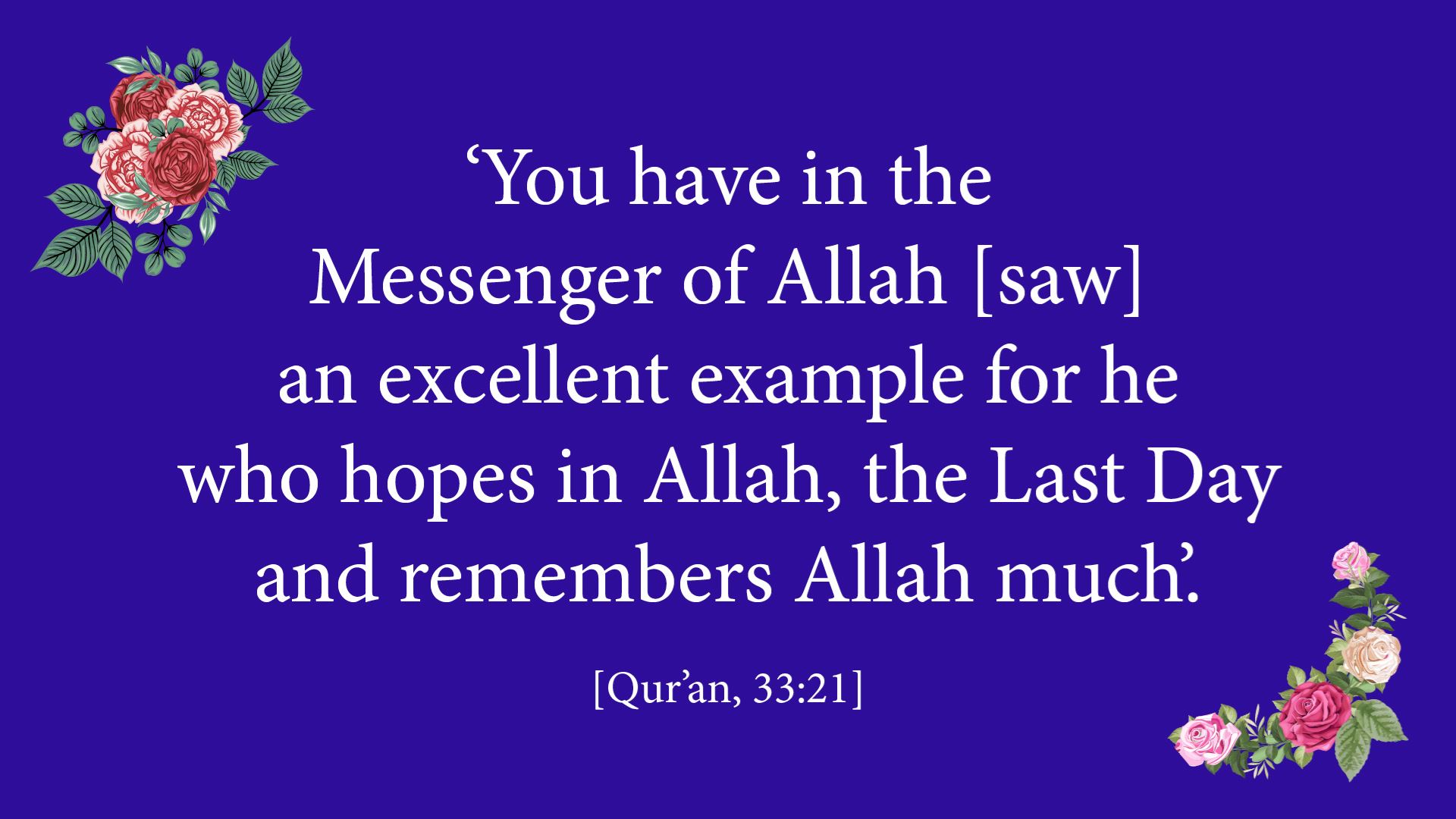
These Ottoman Hilye art pieces are a work of calligraphy and illumination, which aesthetically encompass the physical appearance (Khalq) and moral character (Khuluq) of the Prophet (saw) while being beautiful ornaments.
The first Hilye
The first Hilye to be produced as an art form was most likely the one by the great Ottoman calligrapher Hafiz Osman Efendi (1644-98 CE) in the 17th century. He created the Hilye format we see most commonly today, basing it on the Prophet’s (saw) description in Imam Tirmidhi’s (rh) Ash-Shama’il al-Muhammadiyyah, ‘The Muhammadan Traits’.
The most famous descriptions of the Prophet (saw) are those by ‘Ali ibn Abu Talib (ra) and Umm Ma'bad (ra), and the most comprehensive and lengthy description given by Hind ibn Abu Halah (ra).
Elements of the Hilye
The following diagram shows the thirteen elements traditionally used in an Hilye art piece. We have explained the meanings behind these elements below! You can download our Hilye poster here.
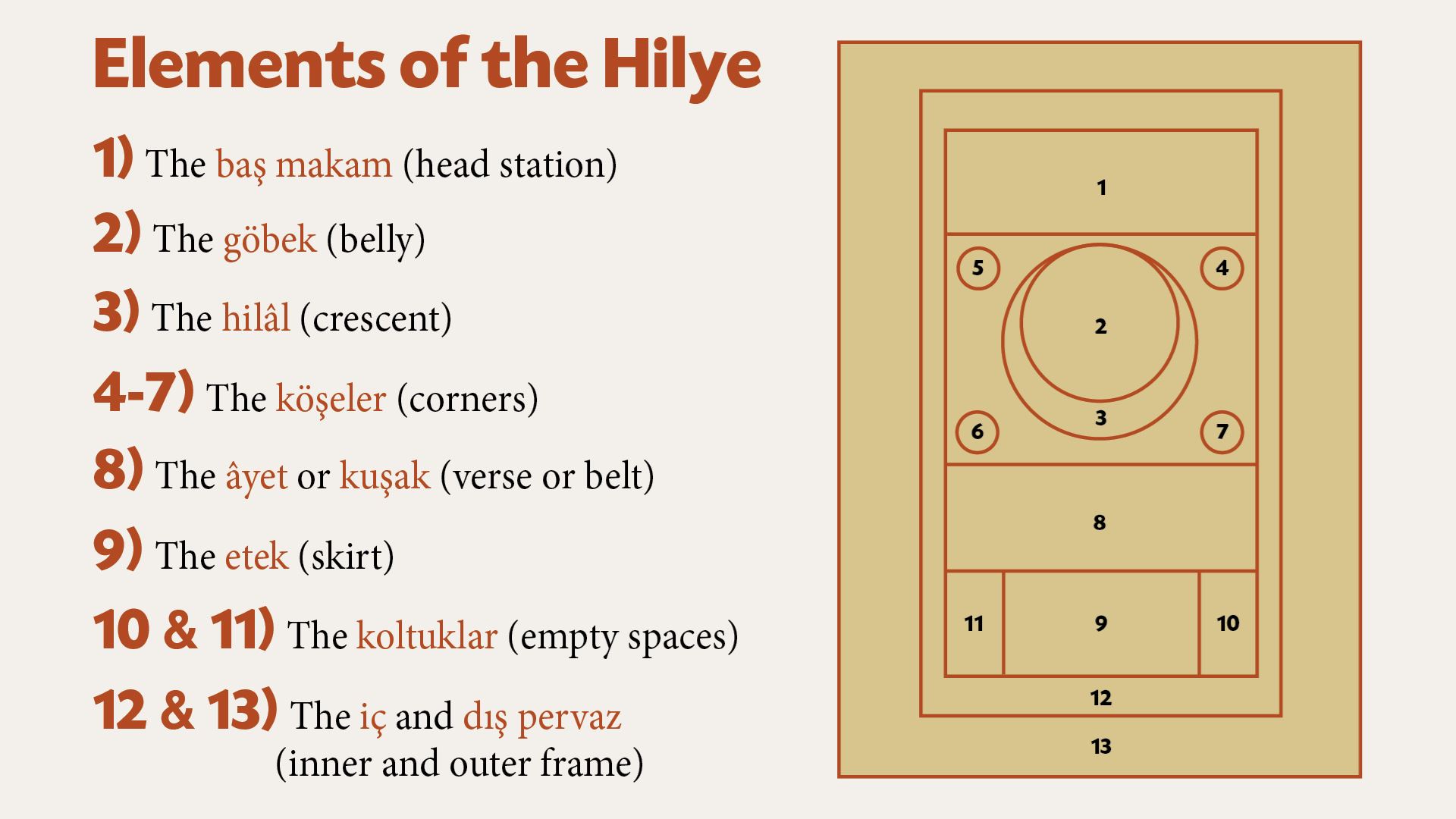
- The baş makam (head station) is the top panel, containing the Besmele, the Turkish word for the Arabic word Basmalah (the formula name for, ‘In the name of Allah, the Most Gracious, the Most Merciful’.
The following two Hadiths indicate the importance of beginning actions with the remembrance and praise of Allah:
‘Every important word or matter that does not begin with the remembrance of Allah is maimed’. [Ahmad]
‘Every important matter that does not start with praise of Allah, is devoid (of blessings)’. [Ibn Majah]
It is for this reason that all Surahs of the Qur’an begin with the Basmalah other than Chapter 9, Surah at-Tawbah.
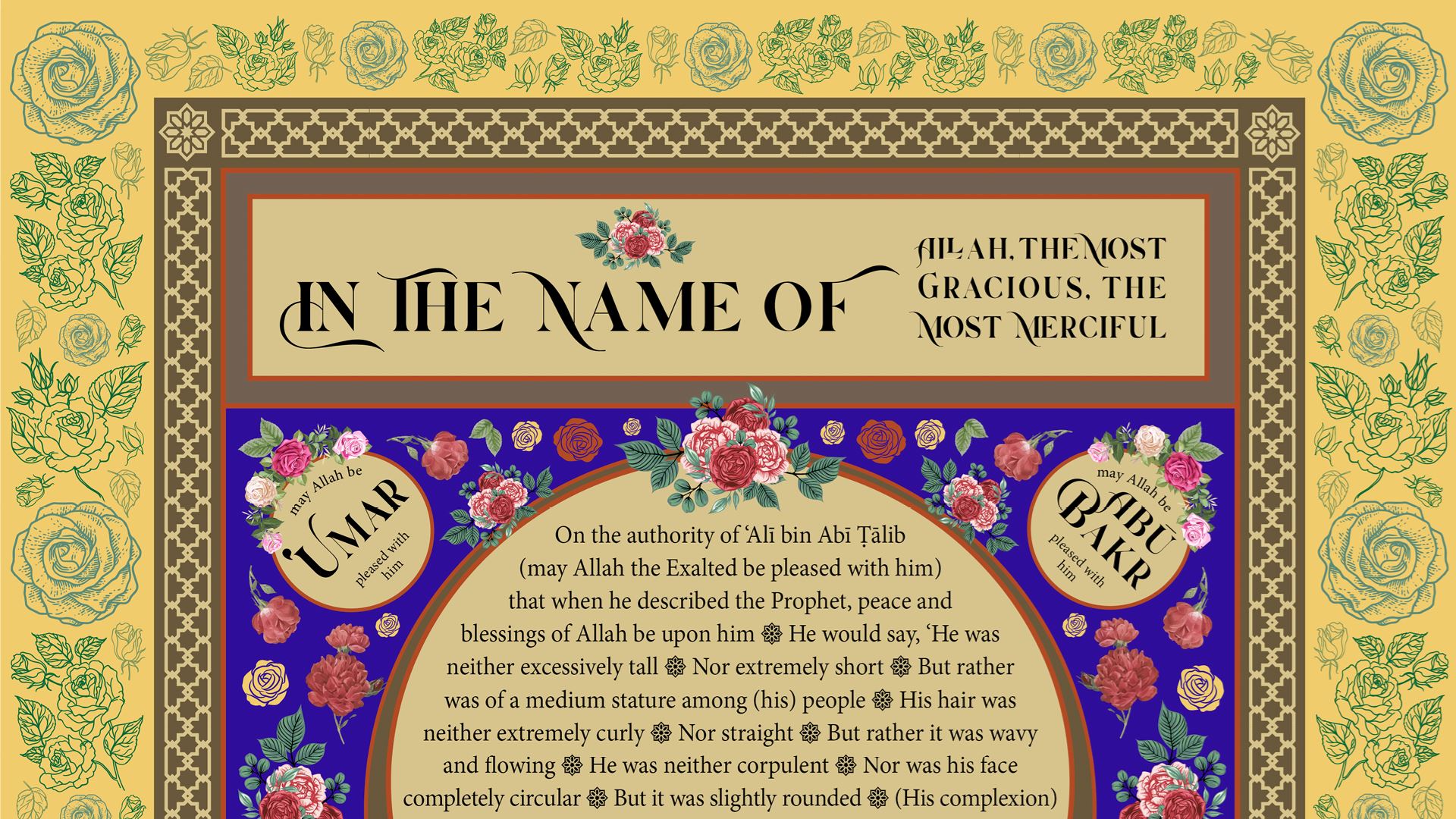
Moreover, the Prophet Sulaiman (as), when writing his letter to Bilqees, the Queen of Sheba (Saba), wrote,
‘Verily, it is from Sulaiman (as), and verily, it (reads), “In the Name of Allah, the Most Gracious, the Most Merciful”’. [Qur’an, 27:30]
We actually find some later Hilyes quoting this verse at the top of their Hilye designs.
- The göbek (belly) is a circle containing the first part of the main hadith, predominantly the physical description of the Prophet (saw).
This circular space most likely indicates the sun and is an allusion towards the following beautiful description of the Prophet (saw) by his close companion, Abu Hurairah (ra), who said:
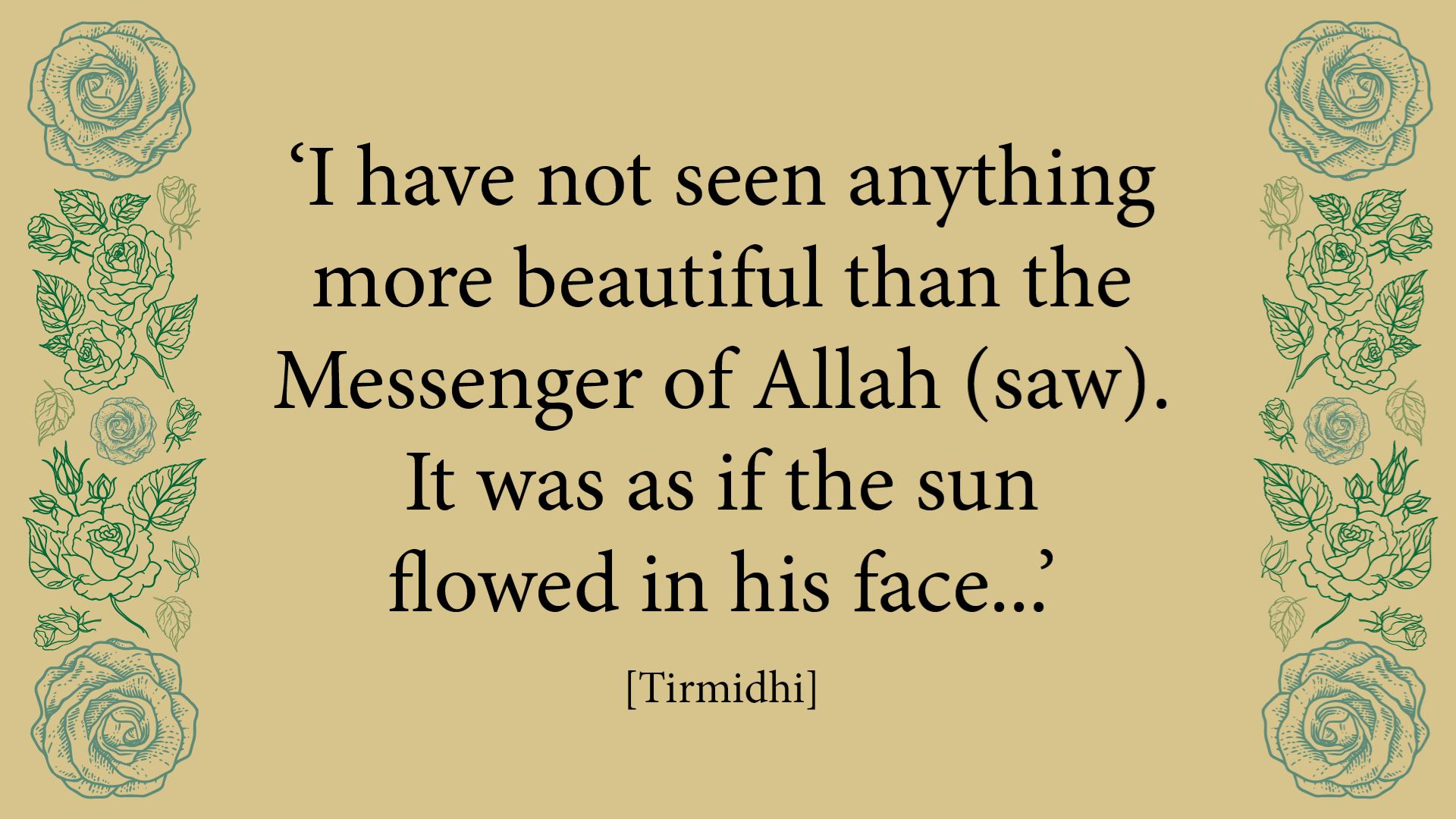
The physical description of the Prophet (saw) is incredibly important and scholars point at the following ayah as evidence that learning about the Prophet (saw) is commanded by Allah:
‘And know that among you there is the Messenger of Allah [saw]’. [Qur’an, 49:7]
Scholars also indicate the importance of knowing and recognising the Prophet (saw) as the wording of the following hadith indicates either the Prophet (saw) appears in our graves or an image of him is presented by the two angels of the grave, Munkar (as) and Nakir (as,) at the time of questioning:
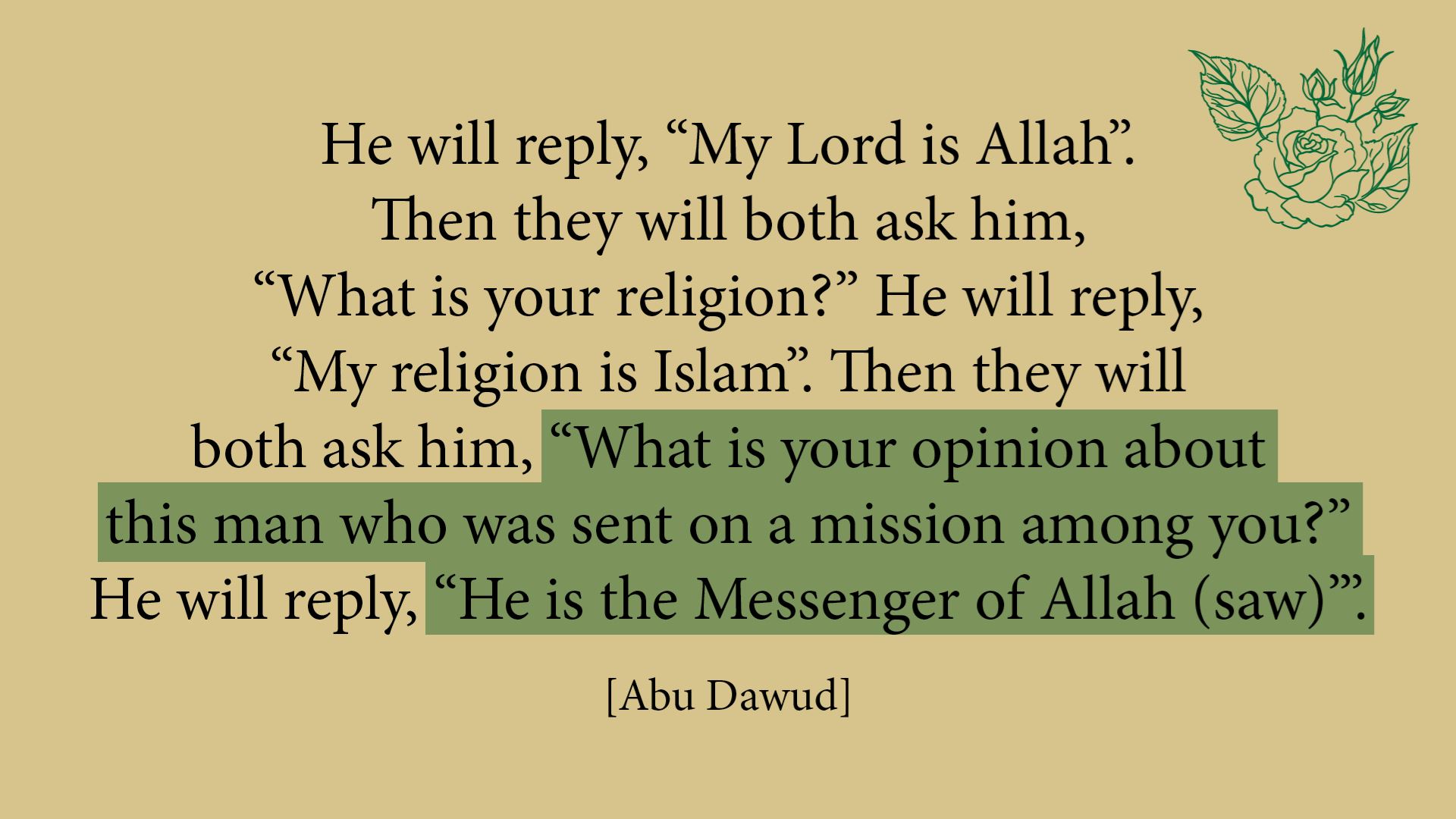
It would be nothing short of a monumental disaster if we are unable to recognise and acknowledge who the Messenger of Allah (saw) is in our graves!
No doubt for this reason, Imam Tirmidhi (rh) began his famous work Ash-Shama’il al-Muhammadiyyah, ‘The Muhammadan Traits’ with physical descriptions of the Prophet (saw) and ends his work with a final chapter showing a deep rooted desire to see the Prophet (saw) in the dream state:
On the authority of Abdullah ibn Mas‘ud (ra) that the Prophet (saw) said, ‘Whoever sees me in a dream has indeed seen me, for indeed Satan cannot impersonate me’. [Tirmidhi]
- The hilâl (crescent) is an optional section with no text, encircling the göbek, and often gilded.
Together, the göbek and hilâl evoke the image of the sun and the moon.
The moon is often used to describe the immaculate and perfect beauty of the Prophet (saw) as we can see from the following descriptions:
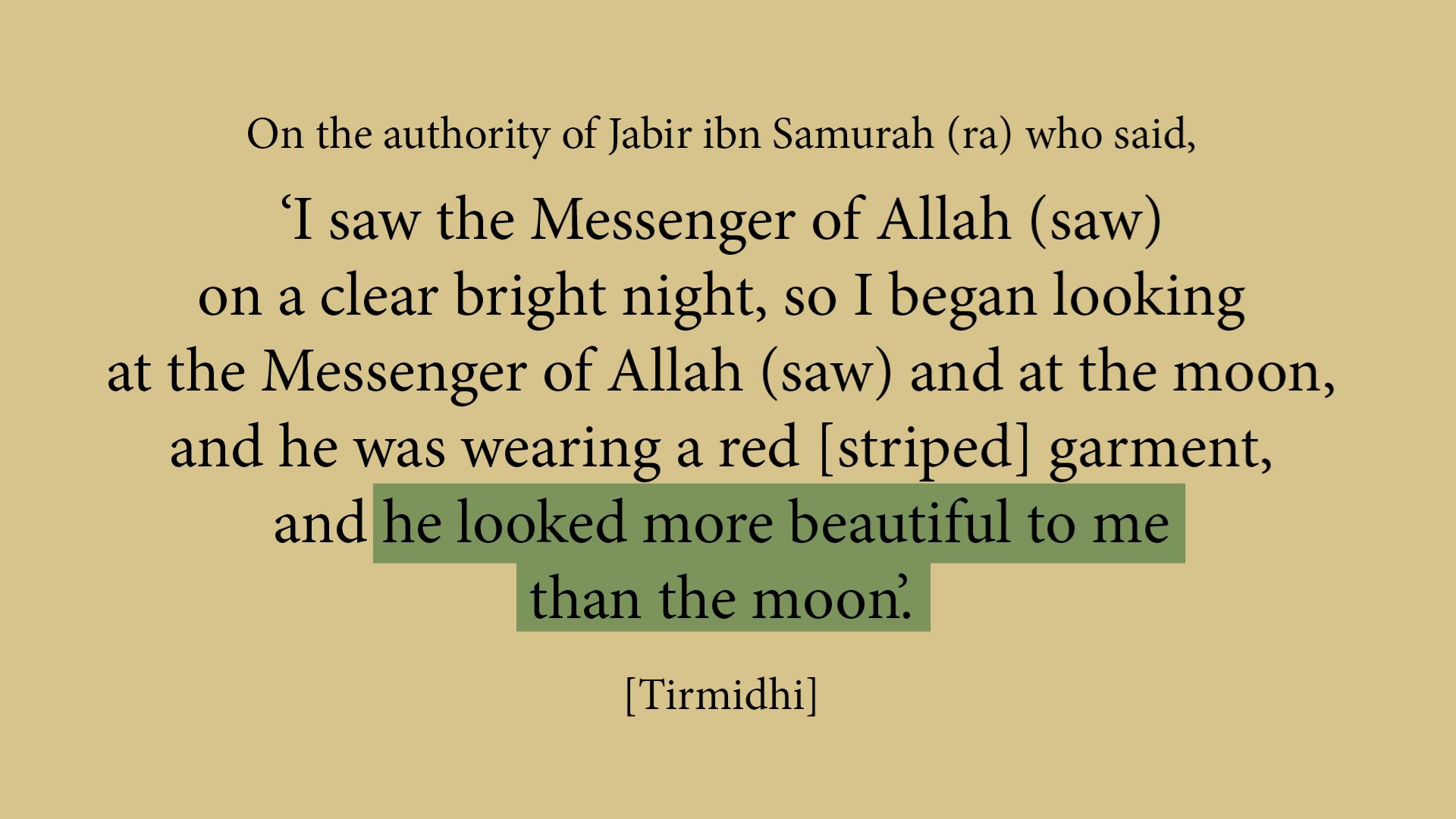
Hind ibn Abu Halah (ra) said, ‘The Messenger of Allah, may Allah bless him and grant him peace, was imposing and majestic. His face shone like the full moon’. [Tirmidhi]
Scholars also note that one of the names of the Prophet (saw) mentioned in the Qur’an is ‘TaHa’ [Qur’an, 20:1]. The Arabic numerical value of this is 14 (where Ta equals 9 and Ha equals 5), where the 14th night of a lunar month is a full moon!
4, 5, 6 and 7. The köşeler (corners) are four rounded compartments surrounding the göbek.
They typically contain the names of the Four Rightly-Guided Caliphs, namely Abu Bakr (ra), ‘Umar (ra), ‘Uthman (ra) and ‘Ali (ra), referred to in Turkish literature as the çiharyâr (four companions). These could also contain the names of Allah, the titles of the Prophet (saw), or the ten Companions (ra) given the glad tidings that they will enter Paradise.
The Four Rightly-Guided Caliphs (ra) are singled out due to their high esteem and regard as shown in the following hadith:

It has also been observed that the number four is not coincidental here but rather is a significant number in Islam. Scholars point at this being the number of sacred revealed books: the Torah (Tawrah), Psalms (Zabur), Gospel (Injil) and of course the Qur’an. And also the number of the four archangels: Gabriel (Jibril), Michael (Mikail), Raphael (Israfil) and Azrael, peace be upon them all.
- The âyet or kuşak (verse or belt) is a section below the göbek and hilâl, containing an ayah from the Noble Qur’an specifically addressing the Prophet (saw).
The following ayah is typically used:

Or occasionally the following ayah:
‘Indeed, you [O Prophet (saw)] are upon a tremendous character’. [Qur’an, 68:4]
These ayahs have been selected as Allah directly addresses His beloved Prophet (saw) as a gifted mercy to the worlds and having the best character in His creation.
- The etek (skirt or lower part) contains the conclusion of the hadith description that began in the göbek, ending with prayers upon the Prophet (saw), and the calligrapher’s signature and date.
If the main text fits completely in the göbek, the etek may be absent.
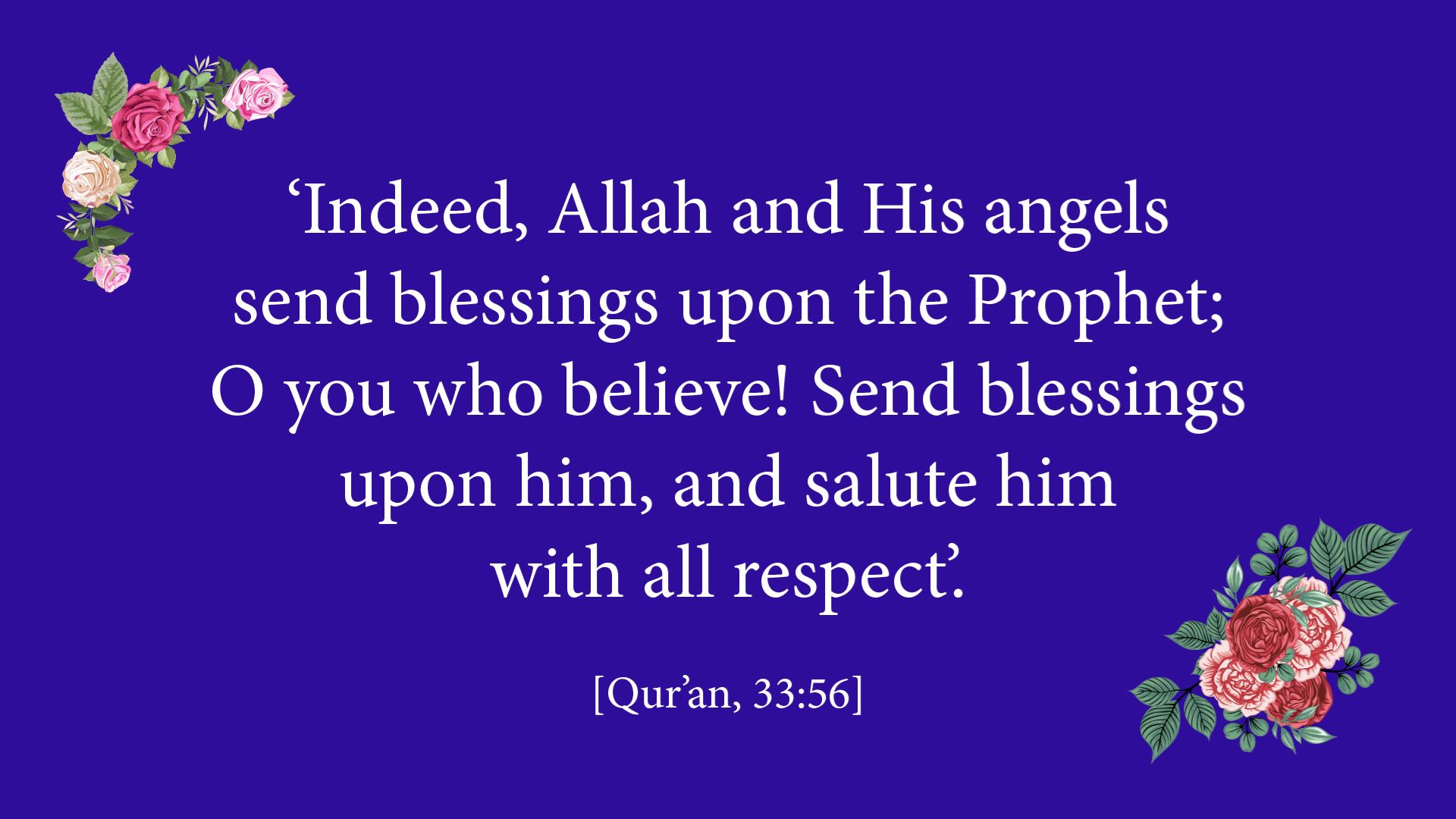
The above ayah indicates that this action of sending prayers upon the Prophet (saw) is an action that Allah and His angels do and we are commanded to do the same. The following hadith shows the incredible reward for obeying this divine command:
On the authority of ‘Abdullah ibn Mas‘ud (ra) that the Messenger of Allah (saw) said, ‘The person closest to me on the Day of Judgement is the one who sent the most prayers (Salah) upon me’.
He (saw) also said, ‘Whoever sends prayers upon me once then, due to that, Allah will send prayers upon him ten times as much and He will write for him ten good deeds’. [Tirmidhi]
- and 11.The koltuklar (empty spaces or armpits) are two alleys or side panels on either side of the etek.
Sometimes, they contain the names of Companions (ra), but typically they just contain ornamentation.
- and 13.The iç and dış pervaz (inner and outer frame) is an ornamental border, which is in correct proportion to the text.
The Hilye is intended to be displayed in homes, businesses and masjids to create a blessed environment. Hilyes are always presented in the most beautiful way in light of the following hadith:
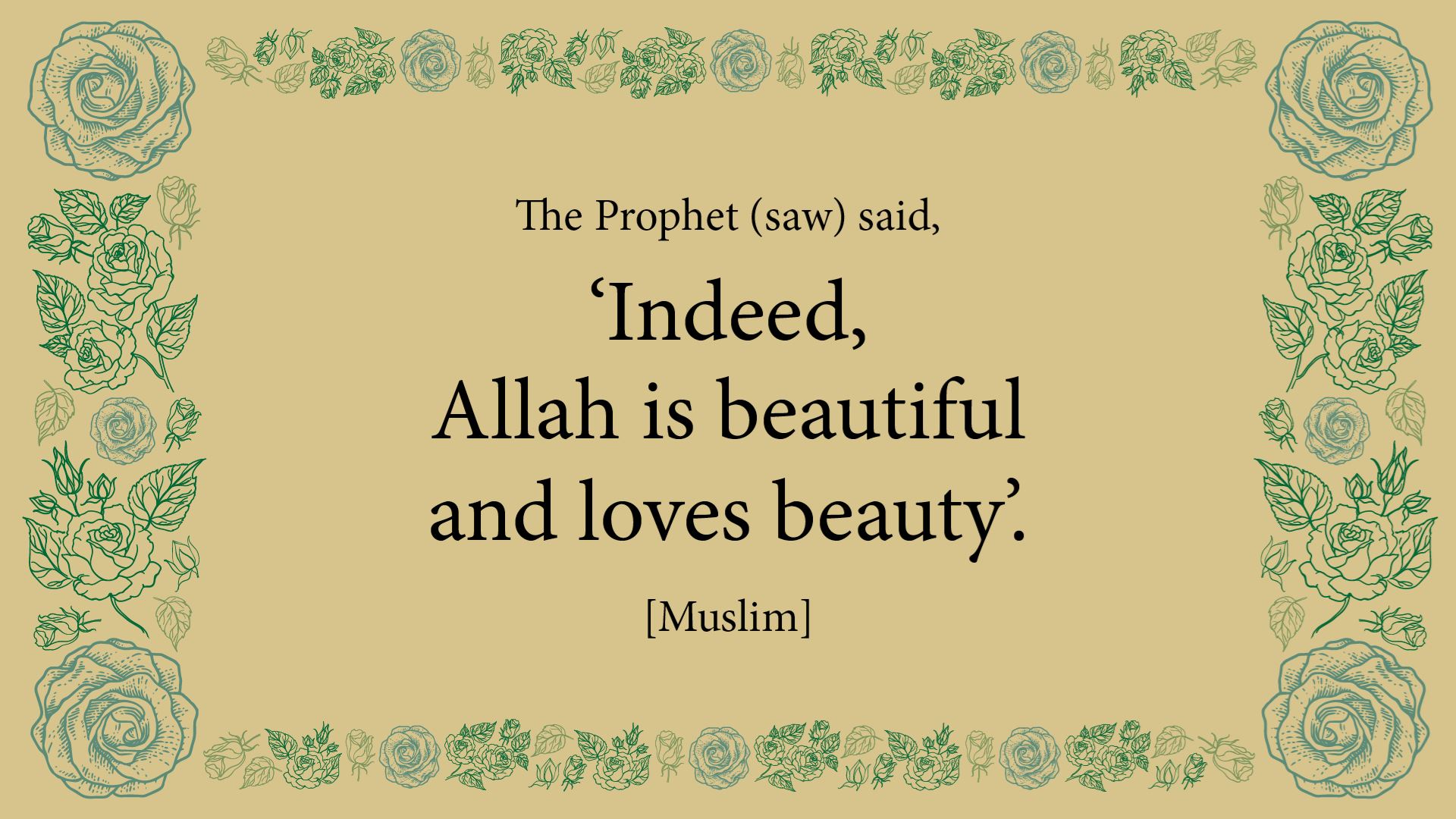
Having an ornate description of the Messenger of Allah (saw) displayed in our homes and places of work is an excellent reminder for us to feel closer to him every time we read this remarkable description, which is both pleasing to the eye and soul! We pray that this will increase our love of the Prophet (saw) so that we can reach the level that he becomes the most beloved person to us in Allah’s creation and so that we can attain complete faith:
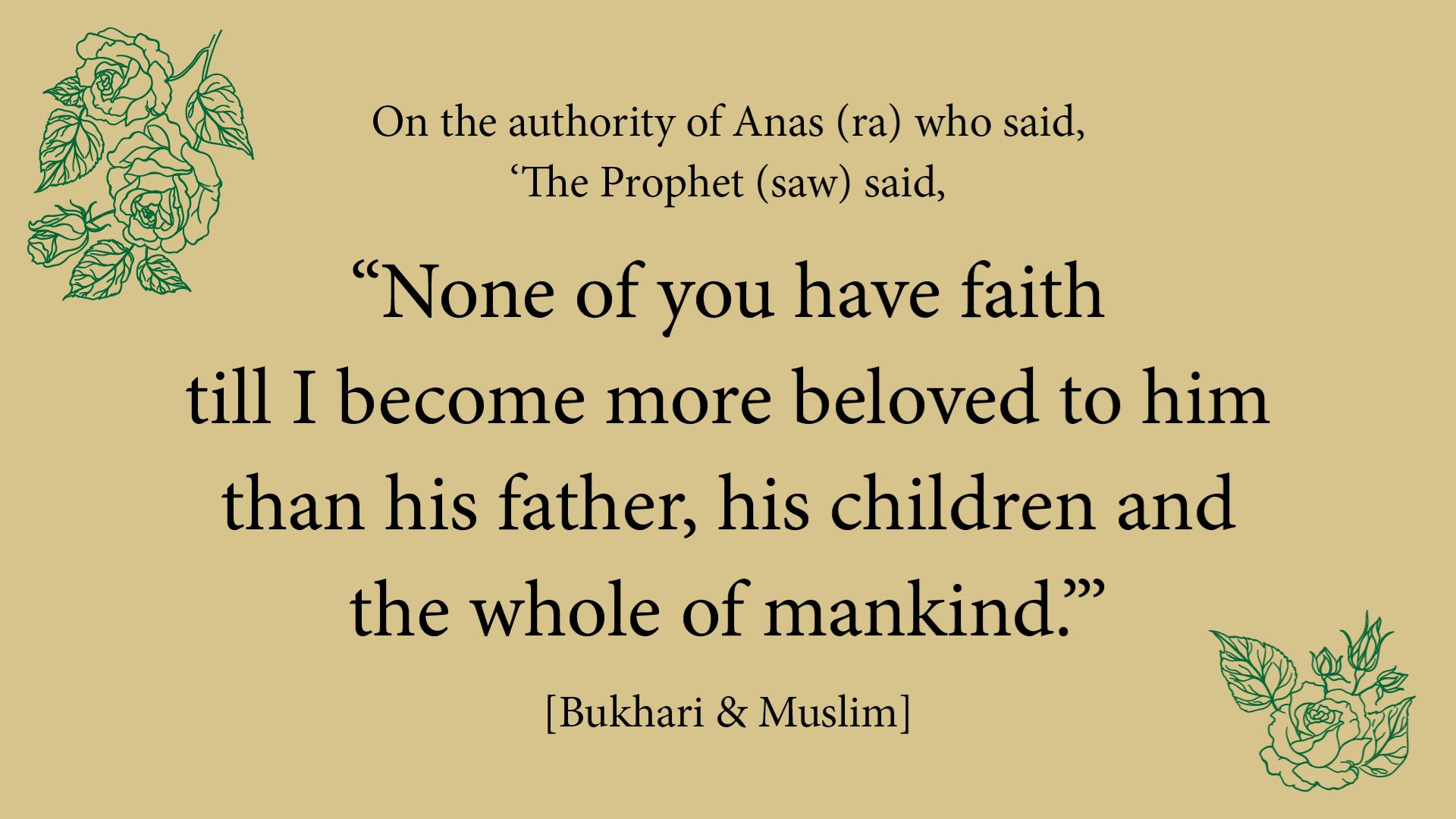
The Hilyes have traditionally been in Arabic and sometimes translated into Turkish. For Rabi’ al-Awwal this year, the Muslim Hands team have designed an English translated version of the Hilye in the traditional style, possibly for the first time ever! This can be downloaded here.
To conclude, in order to gain Allah’s love we have to follow the way of the Prophet (saw) as commanded by Allah:
‘Say, [O Prophet to mankind that], “If you love Allah, then follow me, and Allah will love you and forgive you of your sins. And Allah is Oft-Forgiving, Most Merciful”’. [Qur’an, 3:31]
There are many ways that we can get closer to Allah and His beloved Prophet (saw). In addition to downloading the Hilye and displaying it in your homes, here are three more ways you can draw closer to the Prophet (saw):
- Sponsor an orphan
- Give to the Blessed Bakeries of Yemen and Shaam
- Follow us on Facebook, Instagram, Twitter and YouTube to get daily inspiration from his life and Sunnah.
May Allah send peace and blessings upon the Prophet (saw), increase our love for him, and keep us upon the Qur'an and Sunnah, ameen.
We hope this article was helpful to you! You can also listen to the description of the Prophet (saw) in Arabic and English or listen to a commentary on this description.





